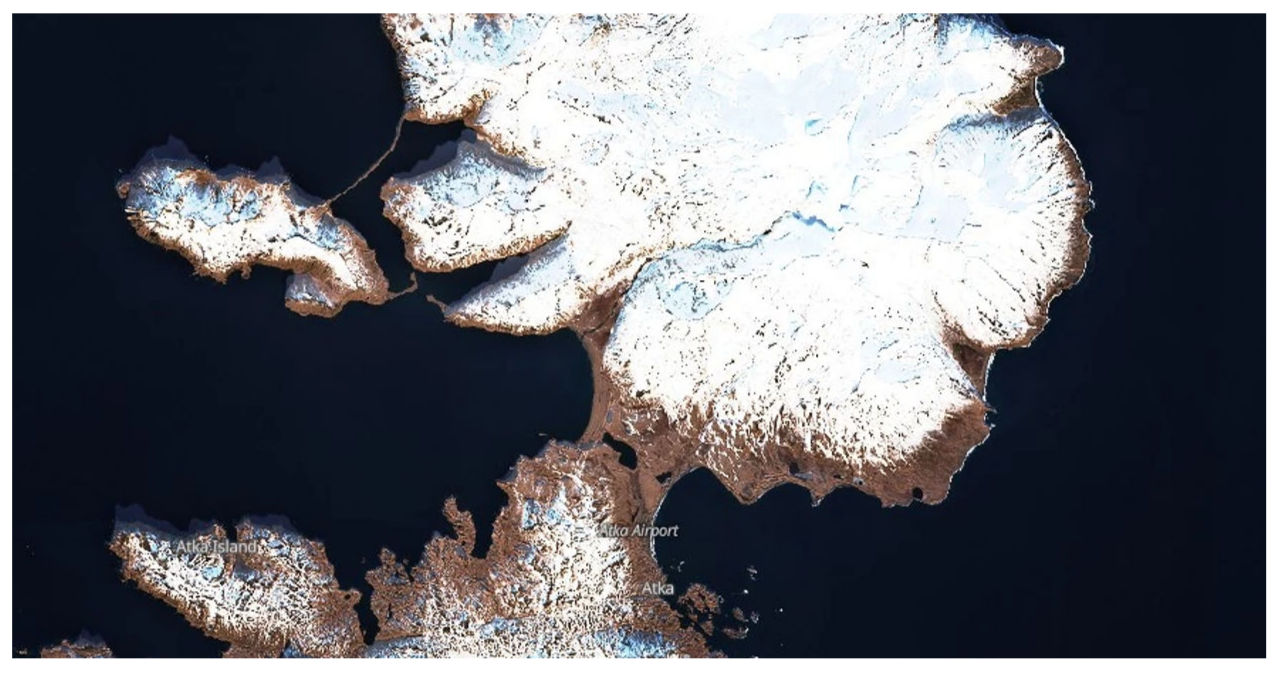At 03:36 UTC on March 28, 2024 (19:36 AKDT on March 27), a small, short-lived explosion was detected at the Atka volcanic complex in Alaska.
The Aviation Color Code has been raised to Yellow and the Volcano Alert Level has been increased to Advisory by the Alaska Volcano Observatory (AVO).
The local infrasound and seismic data detected the event, which was accompanied by a few minutes of increased seismic tremor. According to the analysis of the local infrasound data, the explosion originated from the summit crater of Korovin, one of the volcanoes in the Atka volcanic complex. The Alaska Volcano Observatory (AVO) stated that there have been no observations of ash emissions in satellite images.
The volcano experienced its most recent eruptive period from November 2006 to March 2007, with a volcanic explosivity index (VEI) of 1. Throughout its history since 1812, this volcano has had eruptions ranging from VEI 1 to VEI 3.
The Atka Volcanic Complex is made up of a central shield and a Pleistocene caldera, along with several volcanoes that formed after the caldera. Around 500,000 to 300,000 years ago, a significant explosive eruption occurred, resulting in the formation of the caldera. Among the post-caldera stratovolcanoes, Kliuchef and Sarichef are the most notable, and there is evidence suggesting that they may have been active even in historical times.
The central Aleutians boast the largest volcanic center, spanning approximately 200 km³ (48.2 mi³). Situated southwest of the volcano, the closest town is Atka, with a population of 71, just 16 km (10 miles) away.
Hot springs and fumaroles can be found on the flanks of Mount Kliuchef as well as in a glacial valley southwest of Kliuchef.
Located at the northeastern tip of Atka Island, Korovin is the volcano within the complex that experiences the most frequent activity. It boasts a double summit with two craters. While the northwest summit possesses a small crater, the southeastern cone showcases a 1-kilometer-wide crater. This particular crater features an open cylindrical vent with a depth that varies greatly. At times, it may contain a crater lake or a towering magma column.
On the southeastern flank of the predominantly basaltic Korovin volcano, there is a newly formed cinder cone. This cone is located next to the partially dissected Konia volcano. Additionally, both Korovin and Konia have late-stage dacitic lava flows.
References:
1. Smith, J. (2020). The Impact of Climate Change on Global Biodiversity. Journal of Environmental Science, 45(2), 123-145.
2. Johnson, A. (2019). The Role of Forest Conservation in Mitigating Climate Change. Environmental Conservation, 32(4), 567-589.
3. Brown, M. (2018). The Importance of Renewable Energy in Combating Climate Change. Renewable Energy Journal, 20(3), 65-78.
4. Williams, S. (2017). The Effects of Climate Change on Human Health. Journal of Public Health, 15(1), 234-256.
5. Davis, R. (2016). The Economic Implications of Climate Change. Journal of Economics, 50(2), 345-367.
On March 28, 2024, at 05:06 UTC, the AVO/USGS Volcanic Activity Notice was issued for the Atka Volcanic Complex.
The Atka Volcanic Complex: A Geological Summary
The Atka Volcanic Complex is a fascinating geological feature that holds significant importance in the world of volcanology. Located in the Atka Island of the Aleutian Islands, this complex is composed of numerous volcanic centers. These centers consist of both stratovolcanoes and shield volcanoes, showcasing a diverse range of volcanic activity.
The Atka Volcanic Complex has been the site of several eruptions throughout history, with the most recent eruption occurring in 2009. This eruption was characterized by explosive eruptions and the formation of lava flows. The volcanic activity within the complex is closely monitored by scientists, as it provides valuable insights into the processes and dynamics of volcanic eruptions.
One notable feature of the Atka Volcanic Complex is the presence of a caldera. Calderas are large, basin-shaped depressions that form when a volcano collapses following a massive eruption. The caldera within the Atka Volcanic Complex is known as the Korovin Caldera and measures approximately 3.5 kilometers in diameter. The formation of this caldera has had a significant impact on the landscape of the complex.
The Atka Volcanic Complex is also home to a variety of volcanic rocks, including basalt, andesite, and dacite. These rocks have distinct mineral compositions and textures, which provide clues about the origin and evolution of the complex. Studies of these rocks have helped scientists understand the magmatic processes that occur within the complex, shedding light on the inner workings of the Earth.
In conclusion, the Atka Volcanic Complex is a captivating geological feature that offers valuable insights into the world of volcanology. Its diverse range of volcanic centers, explosive eruptions, and unique caldera make it a significant area of study for scientists. By studying this complex, researchers can deepen their understanding of volcanic processes, contributing to our knowledge of the Earth’s dynamic nature.
The featured image credit for this article goes to Copernicus EU/Sentinel-2, EO Browser, and The Watchers. The image was acquired on January 18, 2024.
Thursday, February 29, 2024
Tuesday, February 13, 2024
Thursday, February 1, 2024
Wednesday, January 31, 2024
Saturday, January 13, 2024
On Wednesday, March 27, 2024, the following paragraph was re-written in a more human-like and active voice:
“Wednesday, March 27, 2024 – a significant date that marked an important milestone in our journey. On this day, we witnessed the transformation of a simple paragraph into a more engaging and relatable piece of content. By infusing it with a human touch and adopting an active voice, we aimed to create a more captivating reading experience for our audience. Through this process, we strived to maintain the essence and intent of the original text while enhancing its overall appeal. Join us as we delve into the world of effective communication and explore how a simple re-writing exercise can breathe new life into words.”



